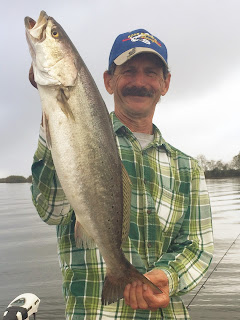3 Steps To Basic Crappie Fishing
Veteran crappie fishers have known or assume to know where and how to catch more fish than most folks. We all know that person, the fisher that everyone calls the fish whisperer. While these folks are great at their crafts, for many, it's not that simple.
There are basic steps to help you catch more fish. While they seem simple, technology has proven what most thought as truths not to be so true. Crappie are always found near cover. Where you find one there has to be more. In extremely cold weather, they are always found deep. The list goes on and on. With inovations like the Garmin Livescope, it has changed the fishing world as we know it.
That being said there are 3 basic steps that will help you catch fish.
The first step is location. While all the tackle in the world and having the the best technology help, you have to be in areas where fish are actually located. This may take a little research. The many social media sites are valuable for finding the best spots. Word of mouth, and asking locals is always benefical too. So you have done your reserach,and asked other fishers where the best places are to fish. Another fact is that fish are constantly on the move. Even though you have found them in one spot one day, doesn't mean tomorrow they will be there. If that special area is not producing, you should change locations. You hear it all the time, "I caught them here yesterday." Another misconception as proven by Livescope is that when it is extremely hot or cold,fish will go deep. That may be true in some of the bigger reservoirs, it's not necessarily true in many places. On the coldest days, I have seen fish suspended 6 inches under the water. This is also true for hotter days as well. Of course nothing is ever one way or the other. The fish could be at any depth range in the water column , so you should try different depths. This is best accomplished by tight-lining, but can also be done by adjusting your float as needed. Some fishers accomplish this by dropping the bait to the bottom and slowly work it up or they start shallow and slowly lower the bait down. This is a great way of locating fish.
Secondly, presentaion is the most important step. Presentaion is more important than any type, color, or size of bait you can select. Admittingly, what I have learned using Livescope technology has made me rethink what I thought I knew about fishing, especailly crappie fishing. With livescope technology, I have noticed just moving your bait a few inches up or down or side to side makes all the differnce in the world. With that being said, how does this knowledge help the novice catch more fish. First, is to slow your presentaion. While it may be easy to catch active fish by fishing fast, many times the fish want it totally still with little or no movement at all. So if the fish are not active, slow it down. Crappie are typically lazy and don't like to travel far for food. Of course this is not always the case. When they are actively feeding, they will certainly chase most any thing that you present to them.
The third and perhaps most contraversial part to catching more fish is type of bait and color. Ask 20 different fishers and they will tell you 20 different baits and colors to use. So where does the novice fisher begin to know what is the right bait or color to use. Like location the best answer is to ask the folks who are actually catching fish. The area you are fishing will also determine type, size and color. In shallow water areas, you can use lighter jig heads like 1/32oz or less. If you are fishing deeper areas you will need 1/8th or even 1/4 oz. Of course you can always use a lighter jig head and add a weight to it if needed. Jig size definitely matters. Another thing i have noticed using Livescope is that sometimes a heavier jig/weight spooks the fish. Having the bait presented lightly or slowly will result in more bites. Weight is perhaps the easiest to figure out but when it comes to color thats a matter of preference. So where do you start. There are givens, like black/chartreuse, blue/white, but the vast array of colors can be overwhelming. There are certain standards that may help you select the right bait. If the water is clear, whites or clear/sparkle colors do well. If the water is stained to muddy, the the darker colors, blues/blacks and even bright colors like orange, chartruese, pinks can be effective. Trust your instincts when it comes to color. If you have confidence in a bait, then it will surely work.
There are a few things in a fishers code to remember. First and most important, never leave fish to find fish.
Just because the fish were there yesterday doesn't mean they will be there today. Try different sizes, colors, depths but its best to keep things simple. Overthinking will only fill your tackle box with tackle you will never use. Never discount another fishers advice. Always be willing to learn, and you will become a better fisher and catch more fish.
On a personal note: my best bait has been Bobby Garland's slabslayer series in Blue Ice, Powdered Blue/White, and Eclipse. In clear water the Bobby Garland Baby Shad Monkey Milk works great. Bobby Garland is not the only manufacturer for certain. Just take a trip to your local tackle shop and you will find an array of baits to chose from.
Good luck fishing. Hope to see ya on the water
#bobbygarland #garminlivescope




Comments
Post a Comment